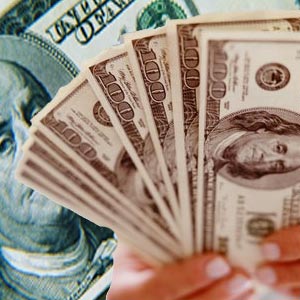
A loan is a type of debt. All material things can be lent; this article, however, focuses exclusively on monetary loans. Like all debt instruments, a loan entails the redistribution of financial assets over time, between the lender and the borrower. The borrower initially receives an amount of money from the lender, which they pay back, usually but not always in regular installments, to the lender. This service is generally provided at a cost, referred to as interest on the debt. A borrower may be subject to certain restrictions known as loan covenants under the terms of the loan. Acting as a provider of loans is one of the principal tasks for financial institutions. For other institutions, issuing of debt contracts such as bonds is a typical source of funding. Bank loans and credit are one way to increase the money supply. A mortgage loan is a very common type of debt instrument, used by many individuals to purchase housing. In this arrangement, the money is used to purchase the property. The financial institution, however, is given security - a lien on the title to the house - until the mortgage is paid off in full. If the borrower defaults on the loan, the bank would have the legal right to repossess the house and sell it, to recover sums owing to it. In some instances, a loan taken out to purchase a new or used car may be secured by the car, in much the same way as a mortgage is secured by housing. The duration of the loan period is considerably shorter - often corresponding to the useful life of the car. There are two types of auto loans, direct and indirect. A direct auto loan is where a bank gives the loan directly to a consumer. An indirect auto loan is where a car dealership acts as an intermediary between the bank or financial institution and the consumer. The interest rates applicable to these different forms may vary depending on the lender, the borrower. These may or may not be regulated by law. In the United Kingdom, when applied to individuals, these may come under the Consumer Credit Act 1974. Predatory lending is one form of abuse in the granting of loans. It usually involves granting a loan in order to put the borrower in a position that one can gain advantage over him or her. Where the moneylender is not authorised, it could be considered a loan shark. Usury is a different form of abuse, where the lender charges excessive interest. In different time periods and cultures the acceptable interest rate has varied, from no interest at all to unlimited interest rates. Credit card companies in some countries have been accused by consumer organisations of lending at usurious interest rates and making money out of frivolous "extra charges" [1] Although a loan does not start out as income to the borrower, it becomes income to the borrower if the borrower is discharged of indebtedness. [18] Thus, if a debt is discharged, then the borrower essentially has received income equal to the amount of the indebtedness. The Internal Revenue Code lists “Income from Discharge of Indebtedness” in Section 62(a)(12) as a source of gross income.






